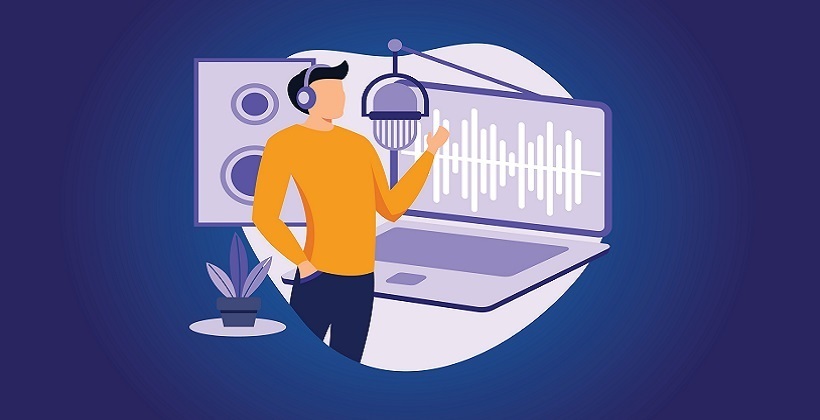How To Choose The Right Tone For eLearning
Countless studies, research reports, and surveys have found that emotion is a crucial component of the eLearning experience. Stress prevents knowledge retention, anxiety can serve as a distraction, and happiness helps us remember the information and assign meaning. Tone is an important aspect of emotion, especially in eLearning experiences. It influences online learner's mood and sets the stage for the entire eLearning course. But how do you choose the right tone for eLearning that reflects your brand, evokes the right emotion, and creates the perfect eLearning atmosphere?
1. Know Your Audience
You're crafting your eLearning content with one audience in mind: your online learners. As such, you need to discover as much as you can about who they are and what they need. The tone of the eLearning course must align with their personal preferences and backgrounds to form a meaningful connection. For example, online learners in one region of the world may feel that your tone is perfectly acceptable. However, others might believe that it's offensive or off-putting. Their experience level, knowledge base, professional affiliations, and cultural background are all important considerations. Conduct audience research, surveys and pre-assessments to collect feedback and create learner personas. In the case of eLearning localization, ask local experts to help you choose the right tone for eLearning based on societal preferences.
2. Use Your Brand Image As A Guide
The tone of your eLearning course should align with your brand image and message. For example, your company is known for being warm and personable. As such, a business-like tone may not be the best choice, as it doesn’t accurately reflect your brand. Think about what your brand represents and then sum up your image in a clear, succinct statement. Use this as a guide to construct the ideal tone for your eLearning course.
3. Complement The Subject Matter
In addition to brand image, the tone of your eLearning course must also align with the subject matter. For instance, health and safety compliance online training courses usually call for a more serious, professional tone, while task-based eLearning can be more conversational and personable. The topic of your eLearning course should also have a direct bearing on the terminology you use, as well as the pace and narrative voice. Your Subject Matter Expert is the go-to team member for this task. Their unique experience can help you fine tune the tone of your eLearning course so that it is appropriate for the subject matter.
4. Adjust The Tone Of Your eLearning Course To The Desired Outcome
There are two primary reasons why you should adjust the tone of your eLearning course to fit the desired outcome. Firstly, it allows you to create an emotional connection with your online learners. For example, a conversational tone that is warm and inviting will make them feel at ease. The second benefit of aligning the tone of your eLearning course with the outcome is modifying your online learner's behavior or mindset. If you want to engage and inspire them to overcome a limiting belief, then the tone of your eLearning course needs to reflect these qualities.
5. Make It Personal
There is a distinct difference between a professional tone and a robotic tone. Your eLearning course must sound natural and conversational in order to resonate with your audience. The most important thing to remember is that eLearning is all about forming a connection. Online learners should feel comfortable when they participate in your eLearning course. Even dry and dull compliance topics can be exciting if you strike the right tone. For example, anecdotes and small doses of humor make the eLearning experience more relatable and personal.
6. Create A Visual Atmosphere
Your pace, flow, and word usage play a crucial role. But there are other factors that dictate the tone of your eLearning course. For example, image, multimedia, and graphics. A cluttered infographic may give online learners all the information they need. However, it also creates a sense of chaos and unease. Likewise, muted color palettes can make your design feel uninviting or cold. It's essential to create a visual atmosphere that evokes favorable emotions and puts online learners in the right frame of mind. For instance, images of smiling people, vibrant color schemes, and bold graphics create an upbeat atmosphere. As such, your online learners are more likely to engage with the eLearning content and remember the key takeaways.
7. Find The Right Mood Music
Background music, sound effects, and audio narratives are another piece of the puzzle. Lively rhythms energize your online learners, but can also serve as a distraction. While classical music has the power to enhance their cognitive functions and create a sense of calm, on the other hand, it also has the potential to bore them. Which is why it's essential to select music that sets the mood and enhances online learner immersion. That being said, there are certain online learners who can't enjoy the musical ambience. For example, online learners with special needs such as hearing disabilities. Therefore, the tone of your eLearning course should not rely solely on sound.
8. Keep It Cohesive
It's crucial to decide on the proper tone before you start creating eLearning content. This helps to ensure that every eLearning activity, module, or assessment falls in-line with your theme. As an example, you want to convey a professional tone that is authoritative, but still relatable. Online learners should feel like they are having a chat with an expert in the field from the very first screen. Cohesiveness sends a clear and direct message to your online learners about what to expect and prepares them for the task at hand.
The tone of your eLearning course is intangible. Your online learners can't see it, but it is present in every aspect of your eLearning course. Think of it as one of the unsung heroes of Instructional Design. Use these 8 tips to choose the ideal tone for your eLearning course and create the perfect eLearning conditions for your online learners.
Are you also trying to create the perfect tone for your eLearning narrative? Read the article 7 Best Practices For Writing Perfect eLearning Scripts to discover best practices for writing top-notch eLearning scripts for your next eLearning course.








